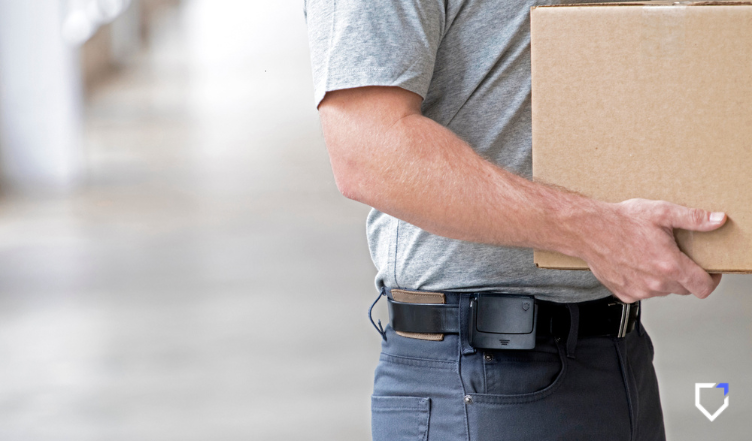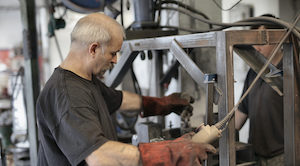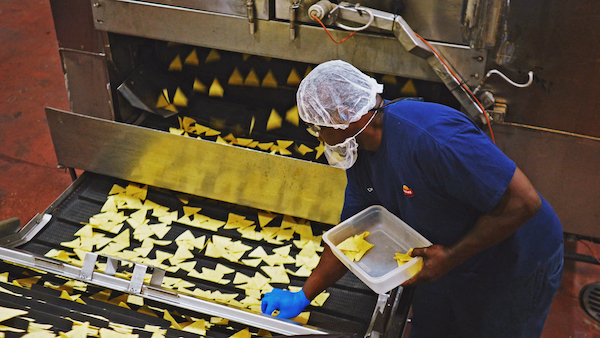
Our new Leadership Q&A series talks with the leaders of Kinetic, and sheds light on their specific areas of expertise. This edition features Troy Fenderson, Vice President of Insurance Operations.
Troy brings more than 30 years of workers’ comp experience to his role. In this interview, we talked about employee safety programs, preventing workplace injury in the healthcare space, and Kinetic’s goal of reducing one million injuries in the workplace in 10 years.
Q- Can you share about your role, your experience, and your approach?
A – In my role, I’m focused on growing and activating our broker network, which is what I’ve been helping companies do for decades. So I bring deep experience in leading growth and profit strategies for both insurance carriers and independent agencies.
Because it’s always been my approach to provide clients with workers’ comp program management that has a lasting, positive impact on employee safety!
Our wearable safety platform is a game changer when it comes to reducing workplace injuries from strains and sprains. I’m excited to bring this cutting-edge technology to clients to help reduce their risk and lower their workers’ comp costs.
Q – Let’s talk about worker safety programs, what impact do they have on loss control?
A – Workplace safety has always been a passion of mine. Preventing injuries before they occur is simply the best way to reduce a client’s total cost of risk and most importantly, to send employees home safely to their families.
Behavioral-based safety programs have been around for decades, but until recently, with the introduction of the Kinetic Reflex wearable platform, they were based on periodic safety training and hoping employees would comprehend, remember, and utilize the knowledge. This required constant management and a considerable investment in managerial resources.
With Reflex we have a real-time coach on the employee’s hip, constantly monitoring movements and coaching as needed. This process is not only more efficient but much more effective in altering employees’ safety focus surrounding the prevention of sprain and strain injuries, a leading national cause of workplace loss. Through pairing our exceptional service platform and Reflex device, our goal of reducing one million sprain and strain injuries in the workplace by 2032 will be accomplished.
Q- How is Kinetic Insurance redefining the concept of loss prevention in the workers’ comp space?
A – As I understand, we are the only company pairing wearable technology at no cost to our clients and a workers’ compensation insurance program. We provide the Kinetic wearable technology free to our clients in an effort to help reduce injuries and control loss. We use cutting-edge technologies with real-time information and employee coaching to modify behaviors that lead to improper bends, twists, and overreaching. This is accomplished through real-time engagement and coaching with the employee through the device, as well as providing a dashboard tool for risk managers to monitor high-risk areas and high-risk jobs.
With the dashboard data, risk managers and safety professionals can identify key areas within an organization where a high degree of improper movements are occurring, and deploy engineering controls to assist in the elimination of such risk sources. Whether through behavior change or engineering controls, by reducing improper movements, we reduce the potential exposure to personal and financial loss – a win for everyone.
Q- Loss prevention and worker safety in the overburdened healthcare industry is a hot topic – what are you seeing in this sector and how can wearable tech help?
A – Healthcare as an industry has many trends that challenge controlling workplace injuries. Staffing level challenges, increased regulation, high demand workloads, aging clients requiring more hands-on care, and an aging workforce to name a few.
Certainly one of the biggest factors is the physical nature of the work to be completed. Most people outside of the industry may not consider healthcare heavy labor, but it can come with a heavy load of manual transfers of residents or patients and at times, in areas that are less than ideal. As an industry, if we can help healthcare workers understand high-risk postures, monitor their activities, and provide real-time feedback to prevent exposure, we are putting the power of prevention in everyone’s hands – or on their hips!
Q – Why did you choose to join Kinetic?
A – With 30 years of experience in the workers’ compensation and risk management industry, I have seen very few, if any, more innovative or progressive programs for managing a client’s total cost of workers’ compensation risk. In an industry you would stretch to call exciting, we are bringing a team and program to workers’ comp insurance that is just that. A group of passionate employees focused on reducing one million injuries in the next 10 years. Process that for a minute… one million reports not filed, one million employees not hurt, and most importantly, one million families not impacted. Reducing one million injuries sounded like a program I could really get behind!








![[Case Study] Kinetic Reduces Injury Risk for DSPs by an Average 55%](https://kinetic-insurance.com/wp-content/uploads/2022/08/delivery-driver.png)




